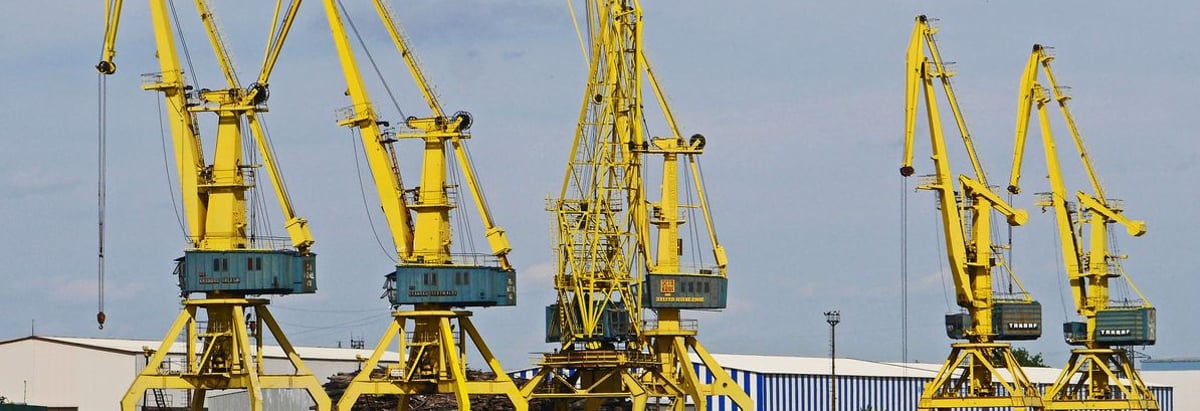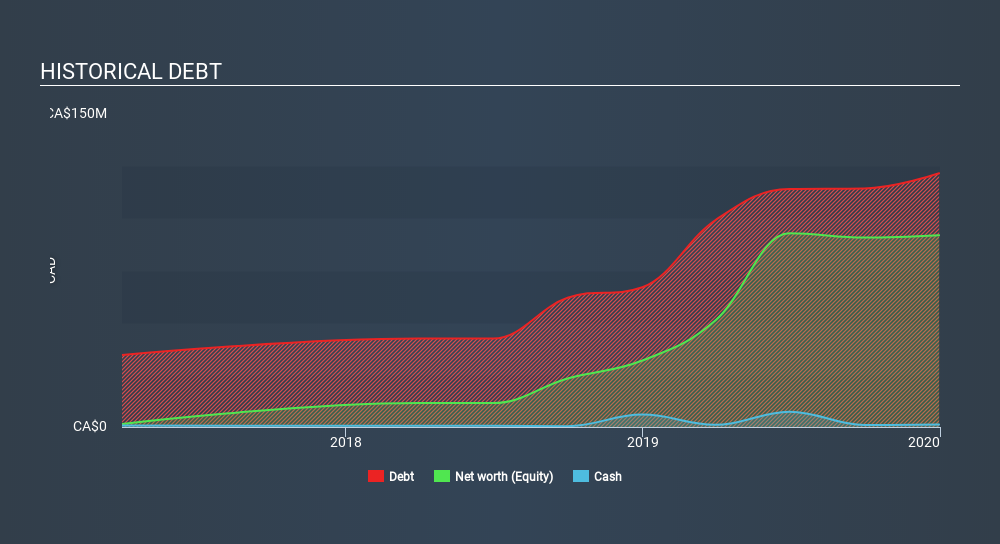- Canada
- /
- Energy Services
- /
- TSXV:WEII.H
Is Wolverine Energy and Infrastructure (CVE:WEII) A Risky Investment?

Warren Buffett famously said, 'Volatility is far from synonymous with risk.' When we think about how risky a company is, we always like to look at its use of debt, since debt overload can lead to ruin. As with many other companies Wolverine Energy and Infrastructure Inc. (CVE:WEII) makes use of debt. But the more important question is: how much risk is that debt creating?
What Risk Does Debt Bring?
Debt and other liabilities become risky for a business when it cannot easily fulfill those obligations, either with free cash flow or by raising capital at an attractive price. If things get really bad, the lenders can take control of the business. While that is not too common, we often do see indebted companies permanently diluting shareholders because lenders force them to raise capital at a distressed price. Of course, the upside of debt is that it often represents cheap capital, especially when it replaces dilution in a company with the ability to reinvest at high rates of return. When we examine debt levels, we first consider both cash and debt levels, together.
Check out our latest analysis for Wolverine Energy and Infrastructure
How Much Debt Does Wolverine Energy and Infrastructure Carry?
As you can see below, at the end of December 2019, Wolverine Energy and Infrastructure had CA$121.6m of debt, up from CA$66.9m a year ago. Click the image for more detail. Net debt is about the same, since the it doesn't have much cash.

How Strong Is Wolverine Energy and Infrastructure's Balance Sheet?
The latest balance sheet data shows that Wolverine Energy and Infrastructure had liabilities of CA$71.9m due within a year, and liabilities of CA$100.1m falling due after that. Offsetting these obligations, it had cash of CA$1.16m as well as receivables valued at CA$44.8m due within 12 months. So its liabilities outweigh the sum of its cash and (near-term) receivables by CA$126.1m.
The deficiency here weighs heavily on the CA$44.5m company itself, as if a child were struggling under the weight of an enormous back-pack full of books, his sports gear, and a trumpet. So we definitely think shareholders need to watch this one closely. After all, Wolverine Energy and Infrastructure would likely require a major re-capitalisation if it had to pay its creditors today.
We measure a company's debt load relative to its earnings power by looking at its net debt divided by its earnings before interest, tax, depreciation, and amortization (EBITDA) and by calculating how easily its earnings before interest and tax (EBIT) cover its interest expense (interest cover). The advantage of this approach is that we take into account both the absolute quantum of debt (with net debt to EBITDA) and the actual interest expenses associated with that debt (with its interest cover ratio).
While we wouldn't worry about Wolverine Energy and Infrastructure's net debt to EBITDA ratio of 4.5, we think its super-low interest cover of 0.91 times is a sign of high leverage. It seems that the business incurs large depreciation and amortisation charges, so maybe its debt load is heavier than it would first appear, since EBITDA is arguably a generous measure of earnings. It seems clear that the cost of borrowing money is negatively impacting returns for shareholders, of late. On a lighter note, we note that Wolverine Energy and Infrastructure grew its EBIT by 24% in the last year. If sustained, this growth should make that debt evaporate like a scarce drinking water during an unnaturally hot summer. The balance sheet is clearly the area to focus on when you are analysing debt. But it is future earnings, more than anything, that will determine Wolverine Energy and Infrastructure's ability to maintain a healthy balance sheet going forward. So if you want to see what the professionals think, you might find this free report on analyst profit forecasts to be interesting.
Finally, a business needs free cash flow to pay off debt; accounting profits just don't cut it. So it's worth checking how much of that EBIT is backed by free cash flow. Over the last three years, Wolverine Energy and Infrastructure saw substantial negative free cash flow, in total. While that may be a result of expenditure for growth, it does make the debt far more risky.
Our View
To be frank both Wolverine Energy and Infrastructure's conversion of EBIT to free cash flow and its track record of staying on top of its total liabilities make us rather uncomfortable with its debt levels. But on the bright side, its EBIT growth rate is a good sign, and makes us more optimistic. Taking into account all the aforementioned factors, it looks like Wolverine Energy and Infrastructure has too much debt. While some investors love that sort of risky play, it's certainly not our cup of tea. There's no doubt that we learn most about debt from the balance sheet. But ultimately, every company can contain risks that exist outside of the balance sheet. Case in point: We've spotted 4 warning signs for Wolverine Energy and Infrastructure you should be aware of, and 2 of them are a bit concerning.
When all is said and done, sometimes its easier to focus on companies that don't even need debt. Readers can access a list of growth stocks with zero net debt 100% free, right now.
Love or hate this article? Concerned about the content? Get in touch with us directly. Alternatively, email editorial-team@simplywallst.com.
This article by Simply Wall St is general in nature. It does not constitute a recommendation to buy or sell any stock, and does not take account of your objectives, or your financial situation. We aim to bring you long-term focused analysis driven by fundamental data. Note that our analysis may not factor in the latest price-sensitive company announcements or qualitative material. Simply Wall St has no position in any stocks mentioned. Thank you for reading.
About TSXV:WEII.H
Wolverine Energy and Infrastructure
Through its subsidiaries, provides energy and infrastructure services to the conventional and renewable energy sectors in Western Canada and the United States.
Low and slightly overvalued.
Market Insights
Community Narratives




